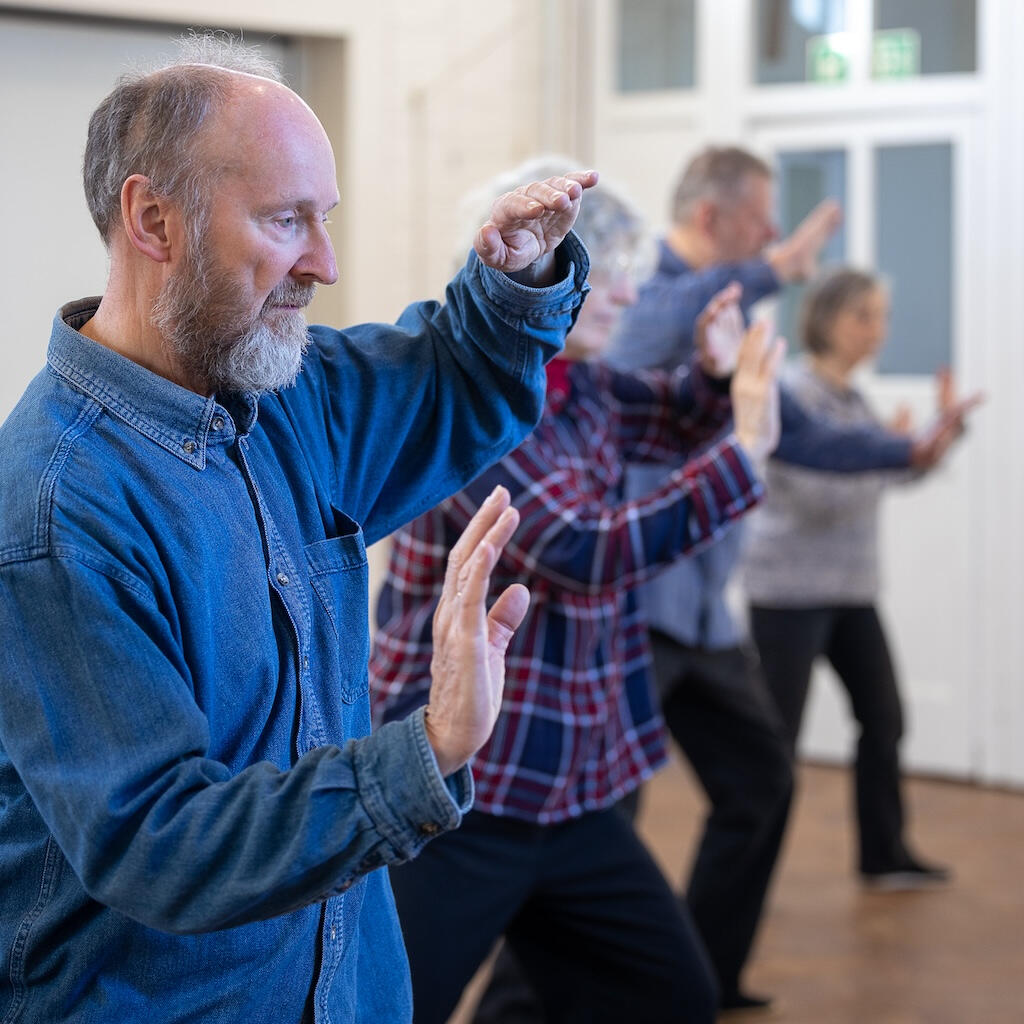
For best results, rotate your phone to landscape orientation
![[placeholder]](assets/images/image09.png?v=3ee76887)
The Tai Ji (Tai Chi) and other exercises we introduce in these groups in Cambridge UK aim to promote the health of the whole person: physical, emotional and spiritual.
Starting from where we find ourselves each morning, the regular practice of relatively simple movements can take us surprisingly deeply into these realms and lead to greater strength, ease and grace in daily life.
As a low-impact form of exercise, Tai Ji puts less strain on joints and muscles, so it is suitable for all ages and most conditions. Yet its controlled shifts in body weight have been shown to increase strength, coordination and balance. And its slow, mindful breathing can help to reduce stress and anxiety.The exercises are introduced in small groups, with as much emphasis on how to do them effectively as on learning new movements for their own sake. Learners are supported in developing at their own pace, with the intention of cultivating their own well-being rather than achieving any sort of external standard.In this way, classes are presented from a modern Western, person-centred point of view. But what they contain are authentic traditional practices coming directly from what is sometimes referred to as the ‘Internal Martial Arts Renaissance’ in early-twentieth-century Beijing.
Alastair Reid
Joining our activities
Newcomers are usually expected to begin with a short course of traditional Chinese body strengthening exercises, Yi Jin Jing. This can be a bridge into a longer term commitment to learning our Tai Ji or it can be pursued on its own as a self-contained practice. The next of these courses will be in January 2026. If you are interested in joining a mailing list to receive further details, please let us know at info@cambridgetaiji.org
Our teaching team
Alastair Reid
An historian, Alastair has practiced this form of Tai Ji for more than 40 years and taught it for more than 20.He is also a practising Buddhist and enjoys East Asian painting and tea ceremonies.

Dee Mitting
Dee is a craniosacral practitioner who has practised this Tai Ji for over 20 years, finding it cultivates integration and Presence.She is also steeped in the contemplative tradition of Muhyiddin Ibn 'Arabi.
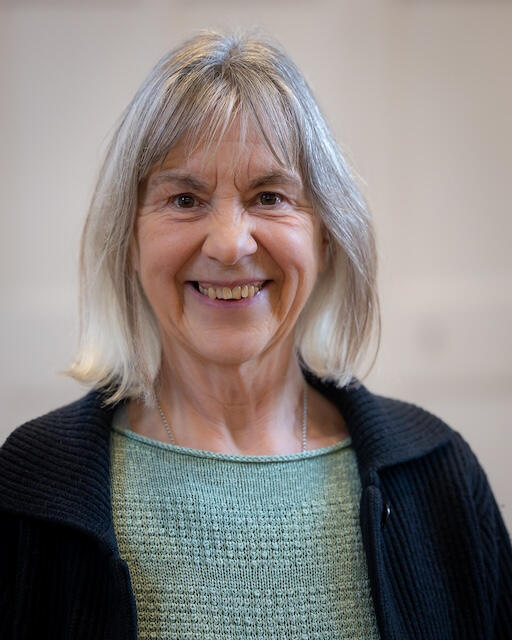
Fiona McFarland
Fiona is an artist who has experienced this more traditional form of Tai Ji for over 20 years.She finds it a boundless resource for resilience, personal growth and strong legs.

© Cambridge Tai Ji 2025. All rights reserved. Contact: info@cambridgetaiji.org
Photography and website by Jeremy Peters
Tai Ji experiences
William’s story
I’m sure everyone has a different reason for why they might be thinking of taking up Tai Ji. Mine was a recommendation from my osteopath for my back. But once practising I discovered Tai Ji gives me so much more than I had ever imagined.I have to admit in the first term I was puzzled as to how a few slow movements, even if graceful, could possibly change anything. Slowly it dawned on me, perhaps from being able to watch others learning too (it’s difficult to observe yourself) that I was actually unlearning so many decades of tensions and bad habits. Stuff we pick up along the way in everything we do and hold in our mind and body, unaware.As time progressed, I began to realise how ‘badly’ I was moving but also how I could improve bit by bit with practise to the next level. And over time I realised there’s always a next level, always a way to improve. There’s more to learning how to do just one Forward Brush Knee effectively than learning every movement of the Tai Ji form. At the same time realising that by ‘improve’ I actually meant getting back to how we were as an infant or perhaps as a wild animal, a thing of ease and beauty, free from all the baggage of life we carry around in and on us.Somewhere along the journey, I’m not sure where or when, I became aware of the profound effect practising Tai Ji was having on my mental state too. A sort of calming, grounding yet energising effect that just sort of happens without trying to meditate at all. It’s not surprising that a background in Tai Ji has been seen as useful for those interested in practical martial arts.I’ve now been doing Tai Ji for over 20 years, with guidance from Alastair along the way. I help organise our group’s informal reading group where we read and then discuss various books and texts, ancient and modern, about Tai Ji and similar arts and philosophies. It is fascinating how actually practising Tai Ji for some years reveals so much more in the writing of others that undoubtedly would have passed me by in earlier times.
William Orme
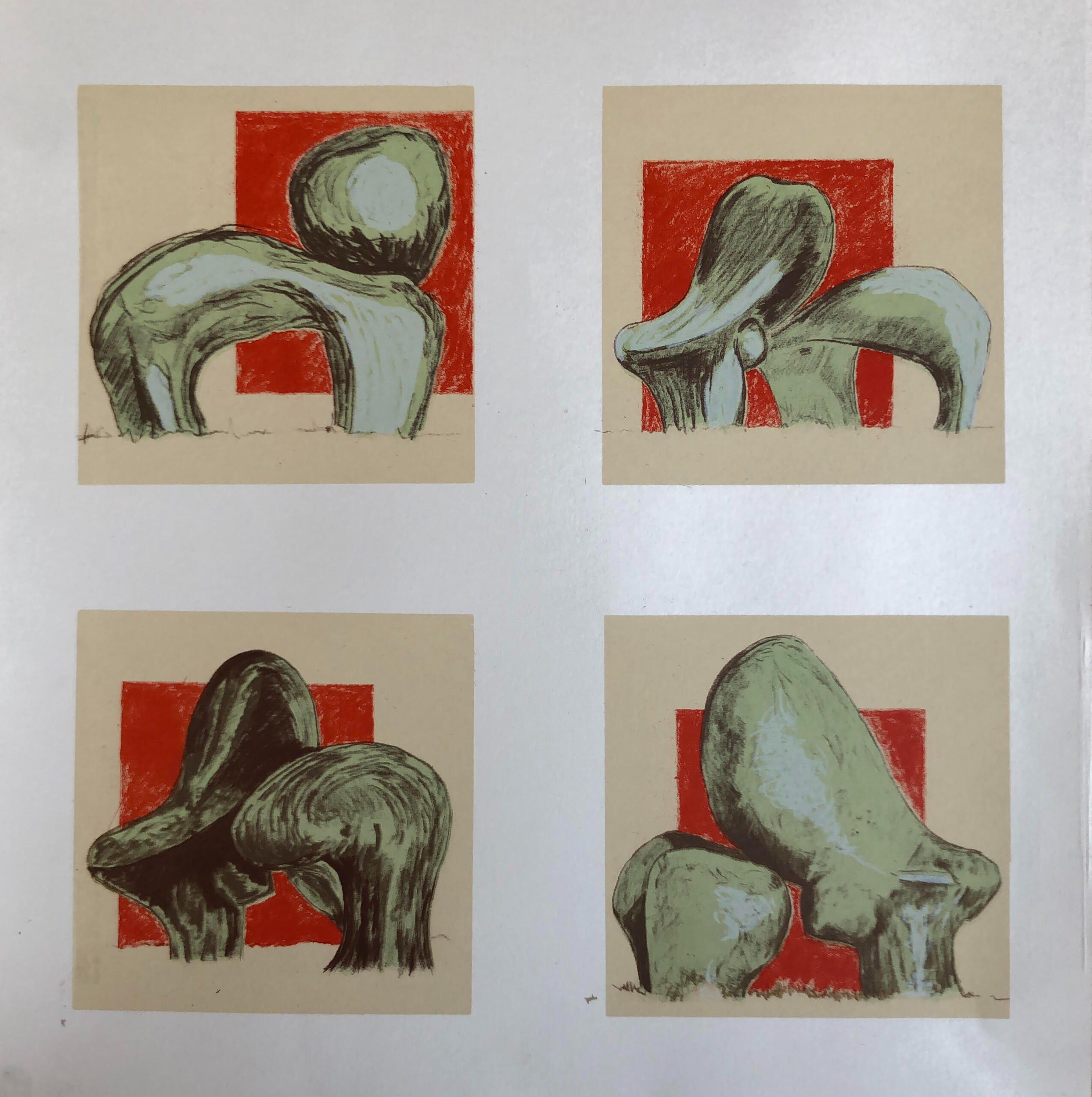
Henry Moore’s Sheep Piece. Print by William Orme.
Ann’s story

Tai Ji Sideways Stepping, Painting by Ann Massing
When I had my hip replacement in 1998, I wish I had known what I know today about my body and my relationship to my body. My recovery was long, and a steep learning curve!I had been doing yoga for over 15 years and was sad to stop, but Tai Ji filled the gap - and more. Alastair’s classes and his patient and perceptive approach have helped me enormously.In the beginning I just concentrated on learning the form, but eventually I came to realize that it doesn’t matter how much of the form you learn, what is important is what Tai Ji can teach you about your body and how you move. And I am still learning. I found that with long-term illness, the state one is in often goes beneath normal awareness and one just carries on! But when doing Tai Ji (or even attempting to do Tai Ji!), the state one is truly in becomes crystal clear – and this is helpful to be mindful of when planning one’s other activities.Also, learning more about Tai Ji has led me further into the philosophy and culture of the Ancient Chinese, which was already familiar to me through my practice of East Asian brush painting, but another angle, so to say, has led me deeper.There is an old Chinese saying: ‘The miracle is not to fly in the air, or to walk on the water, but to walk on the earth’ – and HOW one walks is so important!
Ann Massing
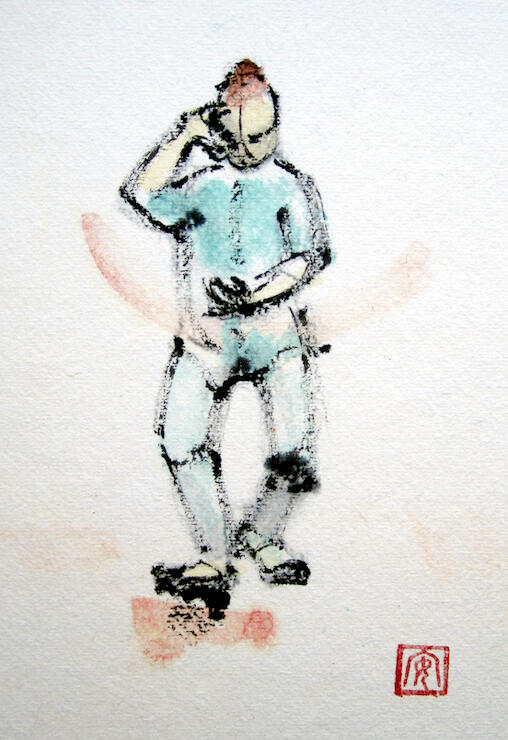
Rolling the Ball. Painting by Ann Massing
© Cambridge Tai Ji 2025. All rights reserved. Contact: info@cambridgetaiji.org
Photography and website by Jeremy Peters
What is Tai Ji?
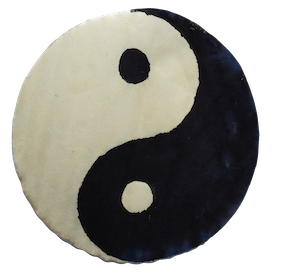
Tai Ji is the name for the symbol of nature in Daoism.
First, you may notice it is round, which means there is no ending, it is everlasting and does not change. Then, you may see that it is divided into Yin and Yang, which means it is always changing. When the two are combined we get the idea: only changing never changes! You can ‘do Tai Ji’ sitting or lying down, which is why practitioners in our tradition often added another word to make it Tai Ji Quan, where ‘Quan’ stands for the ‘fist’ or the ‘whole body’. So, that means a system of physical movement following fundamental natural principles. In earlier times contact with nature was stronger because there were fewer man-made objects around to distract people’s attention … but doing Tai Ji Quan with a modern body still works!
So, good Tai Ji is trying to get towards the natural way: this depends only on a person’s practice and the direction they are going in, so family names and styles are a distraction. Whether you are English or French or German, in every nationality a nice person has the same qualities, which is not affected by the language they speak. But what is ‘nature’? One thing we can do to define it is to see what is not natural: that is, specialised movement, spectacular movement, extraordinary movement, doing the impossible. Tai Ji, on the contrary, is ordinary, common, meant for everybody: so, everybody can do every Tai Ji movement, even if they cannot do it well at the beginning. Eating porridge is better than eating a feast!
Rose Shao Chiang Li
(from Tai Ji As a Martial Way, 2021)
Cambridge Tai Ji First Section
© Cambridge Tai Ji 2025. All rights reserved. Contact: info@cambridgetaiji.org
Photography and website by Jeremy Peters
![[placeholder]](assets/images/image11.png?v=3ee76887)
![[placeholder]](assets/images/image04.png?v=3ee76887)